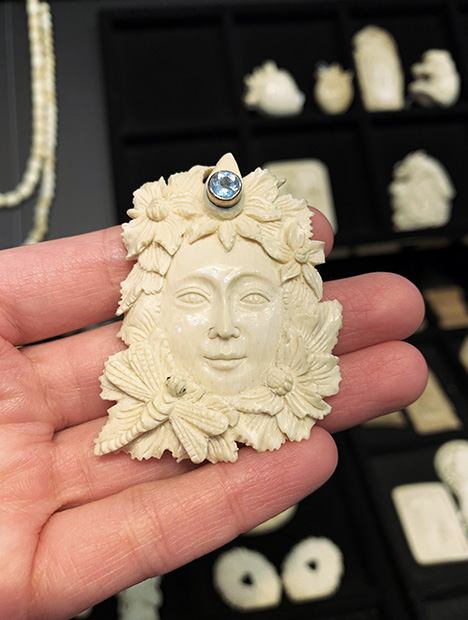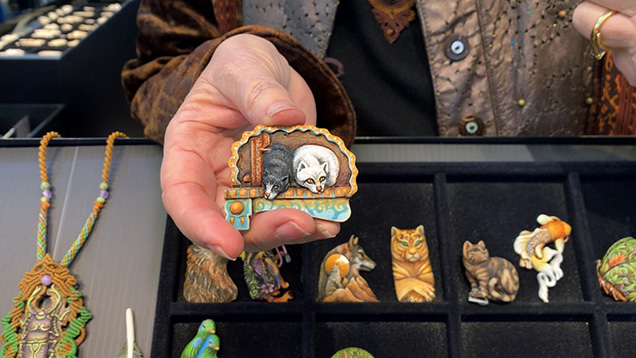Carvings from Bali

Picturesque beaches and lush green jungles are not the only attractions that make Bali the most popular tourist destination in Indonesia. The local carving tradition, derived mostly from woodcarving, adds a layer of artistry and craftsmanship to this tropical paradise. Now many carvers there are also involved in different types of gem materials.
At the GJX show, the author found some authentic and attractive Balinese carvings of Australian opal, mammoth tusk, and bovine bone. Mr. Terry Coldham from Intogems brought opal carvings of pendant sizes, which are highly desired by jewelry designers (figure 1). Mr. Coldham utilizes rough from different Australian mining areas, primarily black and white opal, but some crystal opal as well. The carvings feature natural themes such as plants, flowers, and animals, as well as profiles of faces from different cultures. The carving style includes both relief panel and three-dimensional sculpture. Some pieces show color blocks being skillfully arranged, a technique commonly used by the Chinese in jade carving. The quality of the rough dictates the price, ranging from hundreds to thousands of dollars for each finished piece. According to Mr. Coldham, opal carvings have sold well over the past several years. He enjoys working with the Balinese carvers and added that after a couple of years of collaboration, the products have improved to better fit the international market.


Another exhibitor that caught the author’s eye is Susan Tereba. Ms. Tereba moved to Bali over 30 years ago and still lives there today. She brought to the show amazing hand-carved mammoth tusk and bovine bone. Ms. Tereba appreciates the remarkable talent of the Balinese carvers, who are fast learners and can easily grasp themes that are not indigenous. These exquisite carvings also show a wide variety of motifs, with animals and goddesses the most popular and some pieces are gem studded (figure 2). The bovine bone carvings are dyed, and according to Ms. Tereba the color is very durable and resistant to wear (figure 3). Jewelry designers and hobbyists are her main clients.
Watch videos of Terry Coldham and Susan Tereba displaying Balinese carvings:
.jpg)


